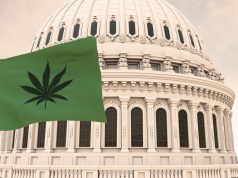
This summer I turned 31. I’m not saying I’m getting old, only that suddenly my bones started creaking, commercials for over-the-counter (OTC) heartburn medications started to make sense and I found myself asking my budtender to recommend a strain of cannabis that wouldn’t get me too high. And so it is I came to be standing face-to-face with a display case of marijuana-derived cannabidiol (CBD) products, the ones I’d always dismissed with a certain flippancy. To me, non-psychoactive CBD products were like ordering a skinny decaf latte — why bother?
On that day though, I asked a different question — “why not?” — and loaded my bag with a sampler of products. As the budtender rang up my order I got excited for the week that lay ahead, full of the promise of ache-free bones, stress-free nights and relaxed muscles. “31 and ready to party,” I thought to myself, but as it turns out, I am but a part of a growing trend in consumers seeking out CBD and CBD-dominant strains.
According to a recent report from Brightfield Group, a market research firm focused on the cannabis industry, CBD sales are growing at a rate of 55 percent a year, on pace to become a $1 billion segment by 2020. For comparison’s sake, the marijuana industry at large is growing at an average rate of 25 percent per year, with all North American sales ringing in at $6.7 billion in 2016.
Interestingly, women are at the heart of the growing CBD market demographic, accounting for 55 percent of shoppers, but constituting just 48 percent of recreational consumers. And when it comes to age, CBD users lean slightly older than the general cannabis market, possibly indicating a growing interest in OTC medical applications of CBD.
The study, the largest on CBD usage to date, also reports a consumer behavior that could indicate big changes in traditional medical markets: 42 percent of people who use cannabidiol products stop taking traditional medicines.
What starts as a way to complement existing health and well-being routines ends up replacing them. Sixty-six percent of CBD users say the substance is more effective than OTC medications like Tylenol and more than a third report replacing their prescription medications, like Vicodin and Ambien. In clinical trials, CBD has proven effective in treating insomnia, depression, anxiety and joint pain.
As a point of note, the report surveyed 2,400 members of HelloMD, an online community for medical cannabis users, and so while it is the largest CBD usage to date, it is skewed toward the interests of the existing medical market. Nonetheless, it shows how this demographic regards CBD and the ways in which their consumer behavior has been affected by legal cannabidiol markets.
Regardless of the biases of the community, the study adds substance to a long-held observation from industry insiders: the difference between recreational and medical marijuana markets is not as clear as our legal and political distinctions make them out to be. While the former implies a more casual market for consumers looking to have a good time, many believe that actual purchasing behavior is not so easily explained.
In March of 2017, Travis Howard, CEO of Shift Cannabis Company and owner of a co-located dispensary, introduced me to the idea that most people shopping “recreationally” are actually using cannabis medically, just like they would an OTC medication.
“I believe the largest chunk of the current market and the bulk of the growth to the economy is going to come over-the-counter,” he said. “But, that aspect of the market is being overlooked, as concerned as regulators have been in creating a distinction between medical and recreational. There is no bright line, I guarantee you. I would estimate that up to 75 percent of both markets are truthfully an OTC market.”
When you start to look at the cannabis market this way, the recreational aspect of it suddenly seems dwarfed by its OTC potentials. Even though CBD is technically illegal, it has the ability to sidestep the damaging associations that come with the plant’s psychoactive properties while providing tangible benefits.
Remember back to some of the most significant political victories for cannabis, when the CBD-dominant strain of cannabis, Charlotte’s Web, garnered unprecedented bipartisan support for medical marijuana legislation that would pave the way out of prohibition for medical cannabis in right-leaning states.
Similarly, personal CBD use has the potential to reach consumers currently uninterested and skeptical of marijuana. It could turn out that the recreational markets that have been heralded for their massive market potential are actually niche markets, while the vast economic potential lies in the conversion of shoppers now buying bottles of pills in the aisles of the grocery store pharmacy.














